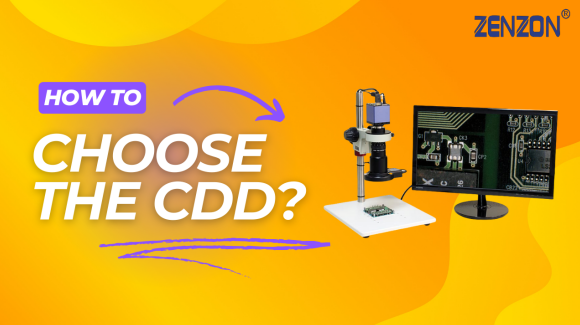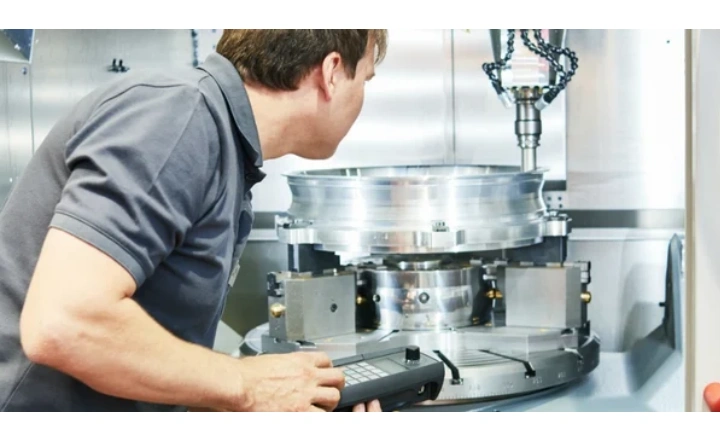In the world of precision and detail, video microscopes play a starring role, akin to the hero in an action movie. They're not just gadgets for scientists in white coats; these versatile tools are now indispensable in fields as diverse as electronics, biology, materials science, and even art restoration. By combining high-definition imaging with digital technology, video microscopes allow users to capture and analyze microscopic details with remarkable clarity and precision.

The true magic of video microscopes lies in their ability to display live images on a screen, making it easier for multiple people to observe the same specimen simultaneously. This is a game-changer in educational settings and collaborative environments. Moreover, with the integration of advanced software, users can measure, annotate, and document their findings, transforming the humble microscope into a powerful data analysis tool. It's like having a magnifying glass that not only shows you the details but also writes your research paper for you—well, almost.
ZENZON Precision: Your One-Stop Shop for Video Microscopes
When it comes to video microscopes, ZENZON Precision is your go-to source. We pride ourselves on offering a full range of these high-tech marvels, designed to cater to all your microscopy needs. Whether you're peering into the intricate circuits of a microchip or examining the fine details of a botanical specimen, we've got the right microscope for you. Our products range from entry-level models perfect for educational purposes to advanced systems designed for industrial and research applications.
But wait, there's more! At ZENZON Precision, we don't just sell microscopes; we offer a complete experience. Our team of experts is always ready to help you choose the best model for your needs and budget. Plus, we provide comprehensive after-sales support, ensuring that your microscope continues to perform at its best long after you've made your purchase. It's not just about the sale; it's about building a relationship with our customers—think of us as your trusty sidekick in the quest for knowledge.
Application Areas of Video Microscopes and the Main Problems They Solve
Video microscopes are like the Swiss Army knives of the optical world. They are used in various fields, each with its unique set of challenges. In the electronics industry, for instance, these microscopes are invaluable for inspecting and assembling delicate components. They help engineers spot flaws that are invisible to the naked eye, ensuring that each product meets the highest standards of quality.
In biology and medical research, best video microscopes allow scientists to observe cells and tissues in unprecedented detail, aiding in the diagnosis and study of diseases. Art conservators use them to examine and restore priceless works of art, uncovering hidden details that can inform restoration efforts. Meanwhile, in the field of materials science, video microscopes are used to study the properties of different materials, helping researchers develop new and improved products.
One of the main problems these microscopes solve is the limitation of human vision. Even with 20/20 vision, there's only so much detail the human eye can perceive. Video microscopes bridge this gap, providing a level of detail and clarity that would otherwise be impossible to achieve. They also help reduce eye strain, as users can view the images on a screen rather than peering through an eyepiece for extended periods. So, in a way, digital video microscopes are not just tools; they're eye-savers!
Introducing Several Types of Microscopes
Now that we've covered the importance of video microscopes, let's dive into the different types available. Each type comes with its own set of features and benefits, catering to various needs and applications.
1. USB Microscope Cameras: These are the most user-friendly option, perfect for beginners and casual users. They connect directly to your computer via USB, allowing for easy viewing and image capture. Despite their simplicity, they offer excellent image quality and are highly portable. Ideal for hobbyists, students, and educators, USB microscopes are like the compact cars of the microscopy world—small, efficient, and perfect for everyday use.
2. 4K industrial inspection Microscope Cameras: For those who need the highest resolution possible, HDMI 4K microscope cameras are the way to go. These bad boys deliver stunning, ultra-high-definition images, making them perfect for applications where detail is critical. Whether you're conducting scientific research or inspecting high-precision components, a 4K microscope camera will ensure you don't miss a thing. It's like having a high-definition TV for your microscopic investigations.
3. Flat Microscope Cameras: Designed for situations where space is at a premium, flat microscope cameras are sleek and compact. They are often used in industrial settings where traditional microscopes would be too bulky. Despite their slim profile, these cameras pack a punch in terms of performance, offering high-quality images and a range of features. Think of them as the sports cars of the microscopy world—sleek, stylish, and built for performance.
4. Wi-Fi Microscope Cameras: In an increasingly wireless world, Wi-Fi microscope cameras are the ultimate in convenience. These devices connect to your network, allowing you to stream live images to multiple devices simultaneously. This makes them perfect for collaborative work, educational demonstrations, or simply sharing your findings with others. With a Wi-Fi microscope camera, you can say goodbye to tangled cables and hello to freedom—it's like cutting the cord on your cable subscription, but for microscopy.
Main Considerations When Purchasing a Microscope
Choosing the right microscope can be a daunting task, especially with so many options available. But fear not! Here are the main factors to consider, along with explanations of why they're important and how to compare them.
1. Resolution: This is the most crucial factor, as it determines the level of detail you can see. Higher resolution means clearer, more detailed images. When comparing models, look at the pixel count and the sensor quality. A higher resolution is especially important for applications that require precise measurements or detailed observations.
2. Magnification: While resolution is about clarity, magnification is about zooming in. The right level of magnification depends on your specific needs. For example, if you're working with tiny components, you'll need a microscope with higher magnification capabilities. However, more magnification isn't always better; too much can result in a blurry image if the resolution can't keep up.
3. Field of View (FOV): The field of view is the area visible through the microscope at any given time. A larger FOV allows you to see more of your specimen without moving it, which is helpful for scanning large areas quickly. This is particularly important in applications like quality control, where you need to inspect large surfaces.
4. Lighting: Proper illumination is essential for clear viewing. Look for microscopes with adjustable LED lighting, which provides bright, even illumination and doesn't heat your specimen. Some models also offer specialized lighting options, like polarized or coaxial lighting, which can enhance contrast and reveal hidden details.
5. Software and Connectivity: In the digital age, software and connectivity options are more important than ever. Look for microscopes with user-friendly software that allows for easy image capture, measurement, and analysis. Connectivity options like USB, HDMI, and Wi-Fi are also important, depending on how you plan to use your microscope. For instance, Wi-Fi connectivity is great for sharing images in real-time, while USB is more suitable for direct connections to a computer.
6. Ergonomics and Ease of Use: Finally, consider the ergonomics and ease of use. A microscope that's difficult to set up or uncomfortable to use won't be helpful, no matter how high its specs are. Look for features like adjustable stands, easy-to-navigate menus, and comfortable viewing angles.
Conclusion: Your Perfect Microscope Awaits
So, there you have it—a comprehensive guide to choosing the perfect video microscope system . Remember, the best microscope for you depends on your specific needs and budget. Whether you're a seasoned professional or a curious hobbyist, there's a perfect microscope out there waiting for you. And who knows? Maybe your new microscope will become your favorite tool, unlocking new worlds and sparking your curiosity in ways you never imagined. So, what are you waiting for? Dive into the fascinating world of microscopy and discover the unseen details around you.
We'd love to hear your thoughts! Have you used any of these types of microscopes? What's your experience been like? Share your stories and questions in the comments below. And if you're ready to take the plunge and buy a new microscope, don't hesitate to contact us at ZENZON Precision. We're here to help you make the best choice for your needs. Happy viewing!
























